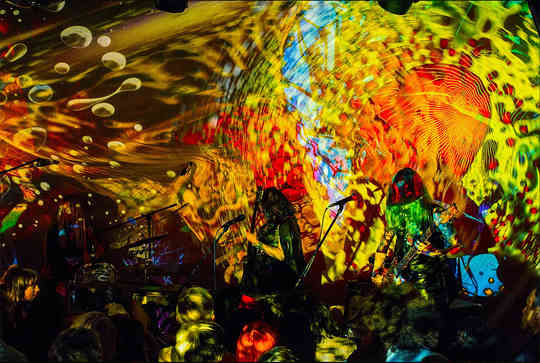
By Michael Pearson
Since Eadweard Muybridge first used a string of cameras to capture a sequence of moving images in 1878, cinema and motion photography have been inexorably linked.
But dig a little deeper and you find a thriving cinema subculture that has rejected the camera entirely, challenging photography’s grip on the art form and setting the stage for deep exploration of different ways to see the world.
Associate Professor Gregory Zinman dove into that world for his new book, Making Images Move, which examines the ways in which these artists have used techniques such as drawing and painting directly on film as a means of expression.
“I think that, for most people, and even for most scholars, cinema is understood as being rooted in photography, and that’s what gets people excited about film — its ability to represent the world and its capacity for telling stories,” Zinman said. “My hope is that this book will introduce people to the careful craft and vibrant color of abstract handmade filmmaking, with the result that we’ll have a new understanding of what makes a moving image.”
As it turns out, this new understanding of how moving images are made, which involves a combination of art and technology, is a great way of thinking about teaching and learning at the Georgia Institute of Technology, too.
“It’s not just about technology or understanding technology. It’s about thinking through technology, about thinking across media and finding new ways to see the world,” said Zinman, who teaches film and media studies in the School of Literature, Media, and Communication. The school is a unit of the Ivan Allen College of Liberal Arts.
Synchromy, a 1971 film by Scottish filmmaker Norman McClaren showcases his techniques for creating sound by photographing images of graphics onto the optical soundtrack of film stock. "The bars and their movement relate to the synthetic bleeps, rumbles, and glissandi the viewer hears," Zinman notes on his website. The film’s method of presenting the synergy of sound and image is didactic–one quickly apprehends, for example, that as the bars become smaller, the volume diminishes, or that as more lines appear in the strip at the same time, a higher pitch is produced. McLaren thus directs the viewer’s attention toward the relationship between what is being seen and what is being heard."
Understanding Handmade Cinema
Imagine standing in front of a Jackson Pollock painting. Study the drips and splatters. Consider the complex shapes and forms. Pause. Ruminate. Now set it to motion, 24 times a second.
“When it moves, you bring in issues of time, issues related to perception. This is really challenging to viewers,” he said.
The challenge of such art, for both the creator and the viewer, has drawn generations of artists to try their hand at what Zinman calls “handmade cinema.”
The art form includes a variety of techniques.
Before the invention of film, Jesuit monk Louis Bertrand Castel pioneered a “color organ” that would display color when a key was pressed. Later, others would experiment with video synthesizers, kinetic sculpture, light shows, and more.
Some artists, such as handmade cinema pioneers Len Lye and Norman McLaren, painted directly on film. Some buried film in the dirt, dunked it into ocean, or experimented with using natural elements. One, John Whitney Sr. repurposed WWII anti-aircraft technology into an analog computer to create spiraling animations. An early version of the machine was used to create portions of the title sequence for the Alfred Hitchcock film Vertigo.
More recently, some artists have begun incorporating digital elements, drawing on the techniques of pioneers in the field and adding digital manipulation and presentation.
“Artists have been making handmade moving images with a variety of media for centuries, so it’s no surprise that the artist’s hand persists in the digital realm — just think of virtual reality applications like TiltBrush, which allows users to create three-dimensional virtual paintings that you can walk around, or even through.”
John Whitney Sr., an important figure in the development of computer filmmaking, repurposed WWII-era anti-aircraft technology into a device for making complex animations. An analog computer sent signals to motors that turned gears, moving artwork under a camera to create animations. "Whitney’s interest in developing new technologies for abstract filmmaking led him to design machines used for the first computer-based animations," Zinman notes.
The Value of Art and Abstraction
Beyond the artistic, Zinman said he wants his work to help spark conversation about technology as a mode of expression, not just as a tool, and how artists have subverted expectations in pursuit of new ideas.
“You don’t have to take technology at its face value. You don’t have to just use it the way you’ve been told to use it, either as a student, or as a consumer, or as an engineer,” he said.
While LMC has a growing focus on film studies, Zinman knows most Georgia Tech students do not come here to study film, or abstract art. But, he says, such things are important, for their utility and for their beauty.
“Art is actually one of the things that helps you be a better engineer or better computer scientist. It will help you develop critical skills you need to succeed as a professional. Also, it’s just beautiful,” he said. “And I think we need to remember things like joy and pleasure, not just value-neutral things. They’re important, too.”
Learn More About Handmade Cinema



